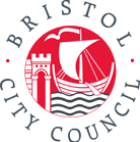Improving Care in Self-Harm HIT's successes in 2016-17
Salena Williams and Sue Dursley, Co- Directors of the Improving Care in Self-Harm Health Integration Team (STITCH HIT) give an update on the HIT's activities in 2016-17. STITCH HIT is working to reduce the number of suicides in the Bristol area.
- 9th May 2017
Salena Williams and Sue Dursley, Co- Directors of the Improving Care in Self-Harm Health Integration Team (STITCH HIT) give an update on the HIT’s activities in 2016-17.
The Improving Care in Self-Harm (STITCH) HIT is working to reduce the number of suicides in the Bristol area, by transforming understanding of self-harm across the health service and improving treatment and support for self-harm patients. Self-harm is a growing problem for the NHS, with around 200,000 emergency cases reported nationally every year. It is the highest predictor of suicide, with self-harm patients 35 times more likely to end their own lives.
Two-thirds of people who self-harm presenting at A&E now receive a psychosocial assessment, compared to just over half in 2011, as a result of changes pushed through by STITCH. The team applied successfully to Bristol Clinical Commissioning Group (CCG) to extend psychiatric liaison hours to evenings and weekends. This service change has saved the local NHS £170,000 according to an economic evaluation by NIHR CLAHRC West. This evaluation focused on patients who had self-harmed, and was only possible because of the data collected through STITCH’s register. The Trust has just been awarded £750,000 from NHS England to extend its psychiatric liaison service to 24 hours a day.
CLAHRC West’s economic evaluation has also given us a wealth of information. For example, we have found that areas which have higher deprivation have more attendances at the emergency department. It also showed that repeat attendance for self-harm has reduced by 27 per cent. Self- discharge has gone down from 20 to 13 per cent since the new longer hours have been implemented. Alongside the self-harm surveillance register, we now have a wealth of data that tells an impressive story about the success of our team’s work.
The self-harm surveillance register is the backbone of our data collection in Bristol. It started at the Bristol Royal Infirmary (BRI) and we now have six years’ data from the hospital, so we can see the effect of service changes over time.
Building on the team’s track record of training A&E staff to recognise and respond to people who have self-harmed, the team met with colleagues from Gloucester Hospitals NHS Foundation Trust. We are looking at sharing demographic trends and statistics in our self-harm data, as well as best practice.
The close working relationship between researchers and practitioners means our HIT can use the latest research and evidence to inform service design, then study how effective it’s been through the self-harm register. Bristol self-harm patients contributed to research which was published this year about internet use, self-harm and suicide. It shows that consulting the internet, particularly about suicide methods rather than searches for help, is a strong indicator of the severity of suicidal intent and the likelihood of subsequent completed suicide.
We have just finished a pilot study on the effects of financial hardship and self-harm. Patients who participated benefited from support on their money and debt issues. We are now recruiting for a study on why people who self-harm find it difficult to engage with research.
For the last six months we have piloted an extended out-patient clinic called Self-Harm Out Patient (SHOP) offering some patients the opportunity to have up to three sessions as an out-patient.
We have been allocated funding from Bristol Health Partners to extend some of our practices to primary care. We will work with five GP practices, targeting areas where there is greater need to promote support in recognising self-harm, how to ask for help and what support is out there. This will be aimed at all staff in the surgeries, to improve the transition from leaving hospital to primary care.
Our work has been nationally recognised in the Department of Health’s National Suicide Prevention Strategy progress report. The team were also visited by Jeremy Hunt, the Secretary of State for Health, in July. He wanted to hear more about our team’s innovative and ground-breaking approach to patient care and service development.






